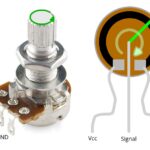Diagnostic Trouble Codes (DTCs) are the language your car uses to communicate when something isn’t quite right. These codes, read using an OBD2 scanner, are crucial for diagnosing and repairing vehicle issues. Among the various types of DTCs, pending DTCs are particularly insightful for understanding the early stages of potential problems. This article, brought to you by the auto repair experts at keyfobprog.com, will delve into the specifics of pending DTCs, explaining what they are, how they differ from other codes, and why they are important for maintaining your vehicle.
What Exactly are Pending DTCs?
Pending DTCs, also known as “maturing” or “soft” codes, are essentially preliminary warnings. They indicate that your vehicle’s onboard diagnostic system has detected a potential issue during a drive cycle, but it needs further confirmation. Think of them as a “first strike” in a “two-trip detection logic” system designed for emission-related components and systems.
Here’s how it works: Modern vehicles constantly monitor various systems, especially those related to emissions. If a sensor reading falls outside the acceptable range during a test in a drive cycle, the system sets a pending DTC. This doesn’t immediately trigger the check engine light (Malfunction Indicator Lamp or MIL). Instead, the system waits for a subsequent drive cycle to re-run the same test.
If the fault condition persists and the test fails again during the next drive cycle, the pending DTC will then mature into a confirmed DTC. This is when the MIL illuminates, signaling a more serious, confirmed problem. However, if the issue is intermittent and the test passes on the second drive cycle, the pending DTC will automatically clear itself.
Alt text: Illustration showing the format of OBD2 DTC trouble codes with examples P0301, P1234, and P2543, highlighting the letter and four number structure.
Pending DTCs vs. Other Types of DTCs: A Clearer Picture
To fully grasp the significance of pending DTCs, it’s helpful to differentiate them from other types of diagnostic trouble codes:
MIL DTCs (Malfunction Indicator Lamp DTCs)
MIL DTCs are the codes that trigger the check engine light. They are confirmed DTCs that the system believes are most likely responsible for turning on the MIL. These codes indicate issues that require immediate attention and are prioritized for repair.
Confirmed DTCs (Stored DTCs)
Confirmed DTCs are “one-trip” fault codes. When a test fails during a single drive cycle and the issue is deemed significant, a confirmed DTC is set, and the MIL is immediately activated. These codes, like MIL DTCs, represent current, active problems.
Permanent DTCs (PDTCs)
Permanent DTCs are similar to confirmed DTCs in that they indicate a verified fault. However, PDTCs are more persistent. They cannot be cleared with a standard OBD2 scanner or by disconnecting the battery. The only way to clear a PDTC is to fix the underlying problem and allow the vehicle to run through several drive cycles without the fault reoccurring. This ensures that the repair is effective and the issue is truly resolved.
History Codes (HDTCs)
History codes are records of past DTCs that are no longer active. These codes can be incredibly valuable for diagnosing intermittent problems. Even if a fault is not currently present, a history code can indicate that it occurred previously, helping technicians trace the source of recurring or elusive issues. OBD2 scanners, particularly advanced models, often retain history codes to aid in comprehensive diagnostics.
Alt text: Diagram illustrating different types of DTC codes including Generic Codes, MIL DTC, Pending DTC, Confirmed DTC, Permanent DTC, and History Codes, emphasizing their relationships and severity levels.
Why are Pending DTCs Important?
Pending DTCs offer a valuable early warning system. They can alert you to potential problems before they escalate into confirmed faults that trigger the check engine light and potentially lead to more serious damage or costly repairs.
Benefits of paying attention to pending DTCs:
- Early Problem Detection: Pending codes can identify issues in their initial stages, allowing for proactive maintenance and preventing minor problems from becoming major headaches.
- Diagnosis of Intermittent Issues: If you experience a fleeting symptom but the check engine light isn’t on, checking for pending codes can reveal intermittent faults that might not yet be severe enough to trigger a confirmed DTC.
- Post-Repair Verification: After performing a repair, technicians can use pending DTCs to verify the effectiveness of their work after a single drive cycle, without waiting for multiple cycles to confirm complete resolution.
- Emissions System Health: Since pending DTCs are heavily focused on emission-related systems, monitoring them can help ensure your vehicle is running cleanly and efficiently, and help you avoid failing emissions tests.
Using an OBD2 Scanner to Check for Pending DTCs
Checking for pending DTCs is straightforward with an OBD2 scanner. Most basic scanners, and certainly more advanced tools like the Innova 1000 Dongle (as mentioned in the original article), have the capability to read and display pending codes.
When you scan your vehicle, the scanner will typically categorize codes into “pending,” “confirmed,” and sometimes “permanent” and “history” sections. If pending codes are present, your scanner will display them, allowing you to research their meaning and take appropriate action.
Conclusion: Stay Ahead of Vehicle Issues with Pending DTC Awareness
Understanding pending DTCs is a crucial aspect of proactive vehicle maintenance. By recognizing these early warning signals, you can address potential issues before they become serious problems, saving you time, money, and stress in the long run. Regularly checking for DTCs, including pending codes, with an OBD2 scanner is a smart practice for any vehicle owner who wants to stay informed about their car’s health and ensure its longevity.
